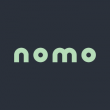Classic product placement has had its day
 Rene Delrieux joined FinTech Futures’ biannual virtual roundtable gathering, Dock Digital, on 18-19 May, to discuss the burning issues in banking, finance and tech. Here, he shares his views and expertise on product development and meeting shifting customer needs in banking and finance.
Rene Delrieux joined FinTech Futures’ biannual virtual roundtable gathering, Dock Digital, on 18-19 May, to discuss the burning issues in banking, finance and tech. Here, he shares his views and expertise on product development and meeting shifting customer needs in banking and finance.
We invite the digital transformation movers and shakers at banks and financial institutions to join a range of senior decision-makers at our next Dock Digital event on 26-27 October 2021 (it’s free to attend!). Find out more and register here.
Since 2020, the trend towards individualised investment decisions has come into sharper focus.
At Commerzbank AG, thematic funds and the topic of sustainability have significantly gained in importance among our fund and ETF investors. Digital investment offerings must therefore be increasingly tailored to customer needs in order to achieve a customer and competitive advantage.
The number of direct bank customers is increasing throughout Germany. The reasons for this are many and varied: negative interest rates on savings accounts, increasing acceptance of online banking, attractive offers from direct banks, branch closures (intensified by Covid-19), but also the fact that the advisory services offered by many banks are no longer accessible to all customers due to minimum investment amounts.
As the acceptance and choice of digital financial service providers increases, so do the demands of customers. Although we still see demand developments in the fund and ETF market driven by positive performance or one-sided reporting, this is increasingly decreasing and is rather unpleasant for customers. Classic product placement is less and less helpful to the individual investor and, accordingly, not to the provider.
In the context of Commerzbank‘s digital investment in funds and ETFs, we have been increasingly relying on customer-centric communication for several years and are increasingly moving away from traditional product placement. This implementation and development is exemplified by our MotivInvesting campaign.
2017 saw the launch of our MotivInvesting campaign format. The aim of the format was to provide first-time investors with an initial orientation for suitable investment opportunities based on individual topics (e.g. sustainability, health, technology and so on). In customer surveys, we found that less is more for this format. Customers appreciated a limited selection of only six themes with three funds and ETFs per theme and a minimalistic presentation. In addition, the survey confirmed that while customers wanted a professional presentation, it should be independent and non-salesy. A broad selection of different asset managers and approaches was viewed positively, while statements such as “Our experts recommend” were viewed negatively.

Customers are now quick to recognise classic product placement and often view it negatively
Over the course of another customer survey, we came to the conclusion that first-time investors often start building their portfolio with equities and not with funds and ETFs. There are many reasons for this, but new customers and first-time investors are often introduced to digital investing through recommendations from acquaintances, for example. Individual stocks enjoy high media attention and offer extreme success stories in individual cases (e.g. Tesla or Plug-N-Power shares in 2020), which are more likely to be communicated in the media and among acquaintances than funds and ETFs. In 2018, we decided to add single stocks to the existing action format.
By 2020, the trend towards theme-based investing had strengthened. At the start of the year, our customers had invested an average of 60% in global equity strategies such as ETFs on the MSCI World Index. However, over the course of 2020, the share of investment in global equity strategies dropped to around 50%. The difference flowed mainly into strategies that followed a thematic approach, such as e-gaming, mobility, blockchain, new energy and ESG.
We judge the change in client behavior in 2020 as a consequence of the Covid-19 crisis. On the one hand, there was a clear sector rotation. Stay-at-home stocks and investment strategies seemed to be the short- to long-term winners of the crisis. On the other hand, people were increasingly concerned with personal investment. This preoccupation with personal investment led to an increase in new customers, often young people with new needs, and in the case of existing customers, to the adaptation or expansion of their portfolios, with the personal touch also becoming more prevalent.
As a consequence of the strong changes in customer needs in 2020, Commerzbank will undertake a major expansion of MotivInvesting in 2021. Customers expect more individualisation, so we will look to include more themes and drill down to increase the choices within the themes (sub-themes). In addition, the investors’ thirst for knowledge has increased, so we will offer a larger and independent range of helpful content on the respective topics.
Product placement is easily recognised by the customer and viewed negatively. Customers expect, and digitalisation allows, us to tailor digital investment solutions to their needs. When introducing new or existing offers and services, the first question to ask is what customer needs are to be satisfied and how can we meet them.
 About the author
About the author
Rene Delrieux is senior product manager, investing at Comdirect, a Commerzbank AG company.
He is responsible for the development of digital money investment solutions in the segment of funds and ETFs.










































